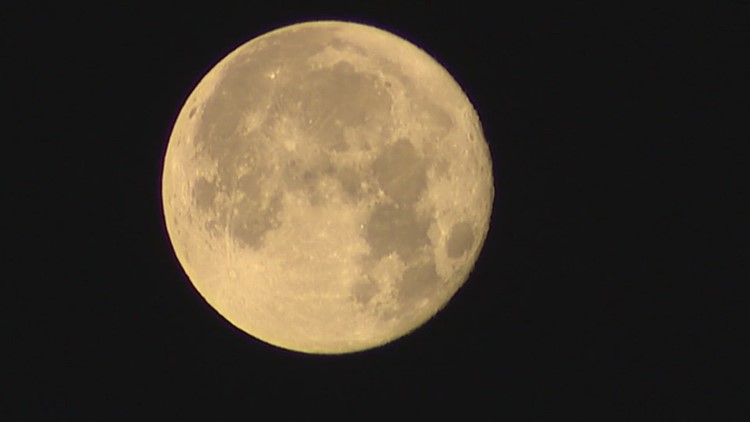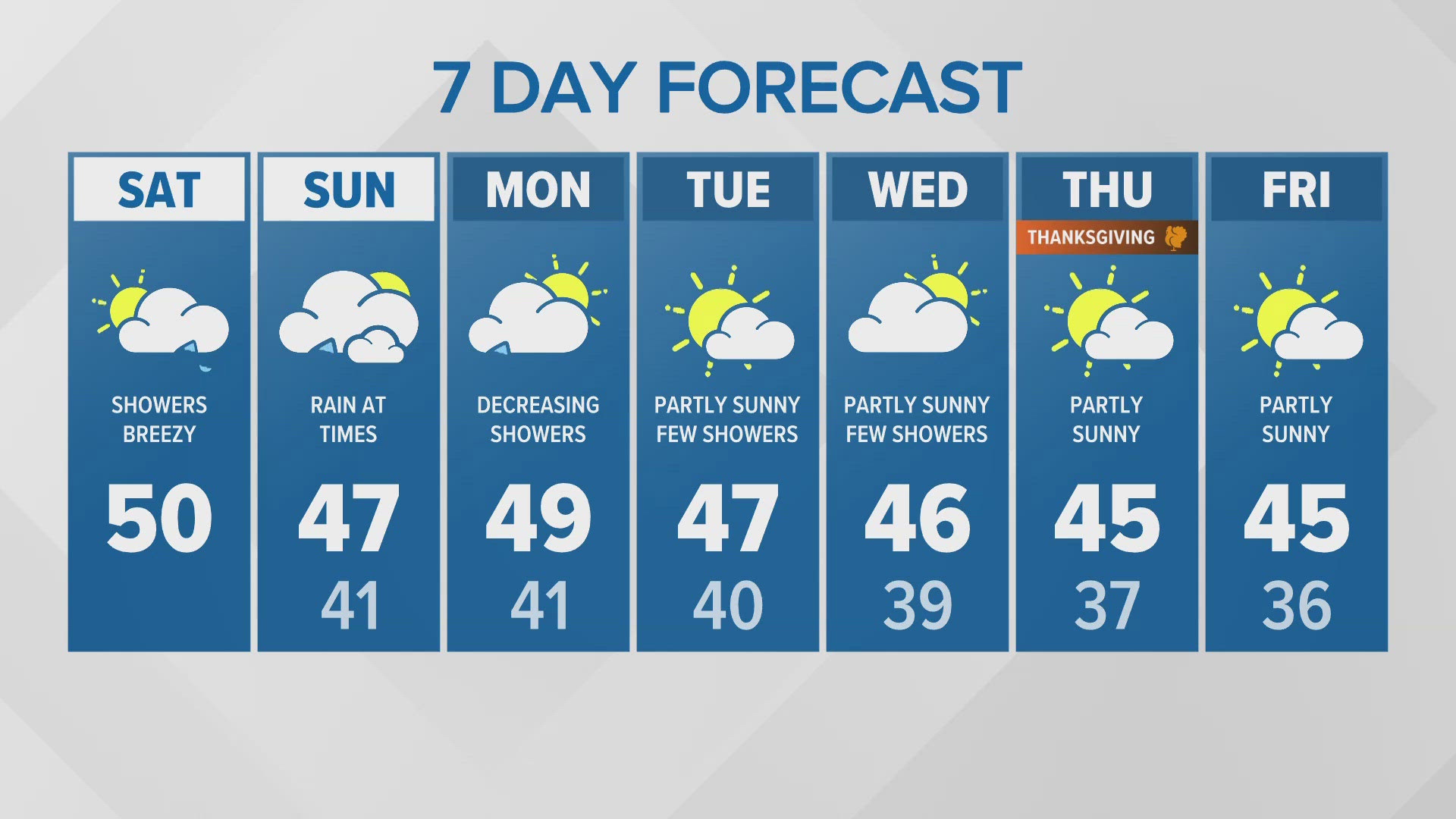SEATTLE — Although there will be partly to mostly sunny skies Thursday night across western Washington, people should still be able to get a glimpse of the coinciding harvest moon and supermoon in the sky.
The harvest moon will be most visible in the very early hours of Friday morning, but it will appear to be fully illuminated like a typical full moon through Saturday.
The full moon is estimated to occur at 2:57 a.m. PT Friday morning. Due to it being the closest moon to the Fall equinox, the Harvest Moon and the September Full Moon combine to form what is called the Full Corn Moon.
KING 5 meteorologist Rich Mariott believes Friday night's moonrise will be the best opportunity for those in western Washington to get a glimpse of the Full Corn Moon.
A supermoon is defined as a full moon occurring when the moon is 90% of its closest approach to the Earth. This month the moon’s closest approach to the earth, called its perigee, occurred at 6:06 p.m. Wednesday.
Scientifically the Supermoon is called “perigee syzygy." In astronomy, “Syzygy” is any time three bodies line up in a gravitational system, in this case - the sun, earth, and moon are aligned which occurs at the full moon and new moon. The National Aeronautics and Space Administration (NASA) said a Supermoon can appear 14% brighter and 30% larger than it would when the moon is at its farthest from Earth (called apogee).
Not surprisingly, when the new moon occurs in two weeks the moon will be near its apogee (farthest from Earth). At the New Moon next month (Oct. 14) there will be an annular eclipse of the sun by the moon. The moon will move directly in front of the sun. This would be a total eclipse of the sun, but because the moon is smaller it can’t cover the sun entirely. A ring of sunlight around the moon, called an annulus, will appear, hence the name annular eclipse.
The eclipse track passes through central Oregon, including Eugene. This eclipse path is only a little south of the total Solar eclipse track back in August of 2017. Here in Seattle, we will see a partial eclipse, but it will be significant covering almost 80% of the sun.
How often does a full moon happen?
The most common answer to this question is 28 days, but that's not actually correct. A full moon happens roughly every 29.5 days.
Technically, it takes 27.3 days for the moon to complete an orbit around the earth. But because both are spinning around the sun, the moon has changed position enough that the sun hits it at a different angle on day 27 than on day 0. It takes another two days for the sun's light to hit the moon exactly like it did on day 0.
Usually, this means there's one full moon every month. But occasionally, the timing can work out so that there's a full moon at the beginning of the month and one at the end. That second full moon is known as a blue moon.
What is a supermoon?
The moon's orbit around the earth is an ellipse, not a perfect circle. A full moon is considered a supermoon when it comes within 90% of perigee, its closest point to Earth.
According to NASA, the closest supermoons appear "about 17% bigger and 30% brighter" than the furthest, faintest moon of the year. That 17% is not actually enough to make the moon look noticeably bigger, but NASA said supermoons are still a bit brighter than other full moons.
The perigee is about 226,000 miles from Earth — about 25,000 miles closer than the moon's furthest point.
While it's popularly used to describe the closest full moons, "supermoon" is not an official astronomical term. In fact, it was coined by an astrologer in 1979.
What is a harvest moon?
This week's supermoon is the last of four this year and comes just after a double supermoon in August, which had two occurrences of the rare phenomenon.
So-called supermoons occur because the orbit of the moon around the Earth is not a perfect circle but a flattened circle or an ellipse. This means that during its 27.3-day orbit, there are points at which the moon is closer to the Earth and points at which it is further away.



